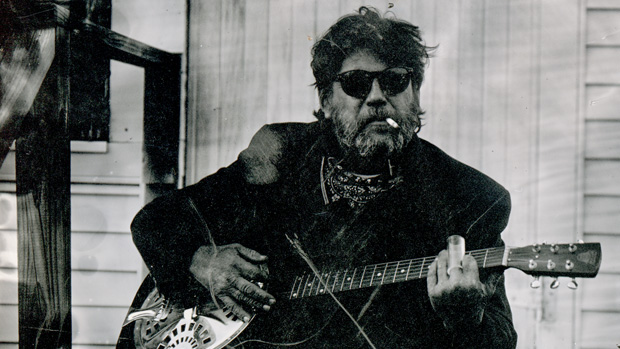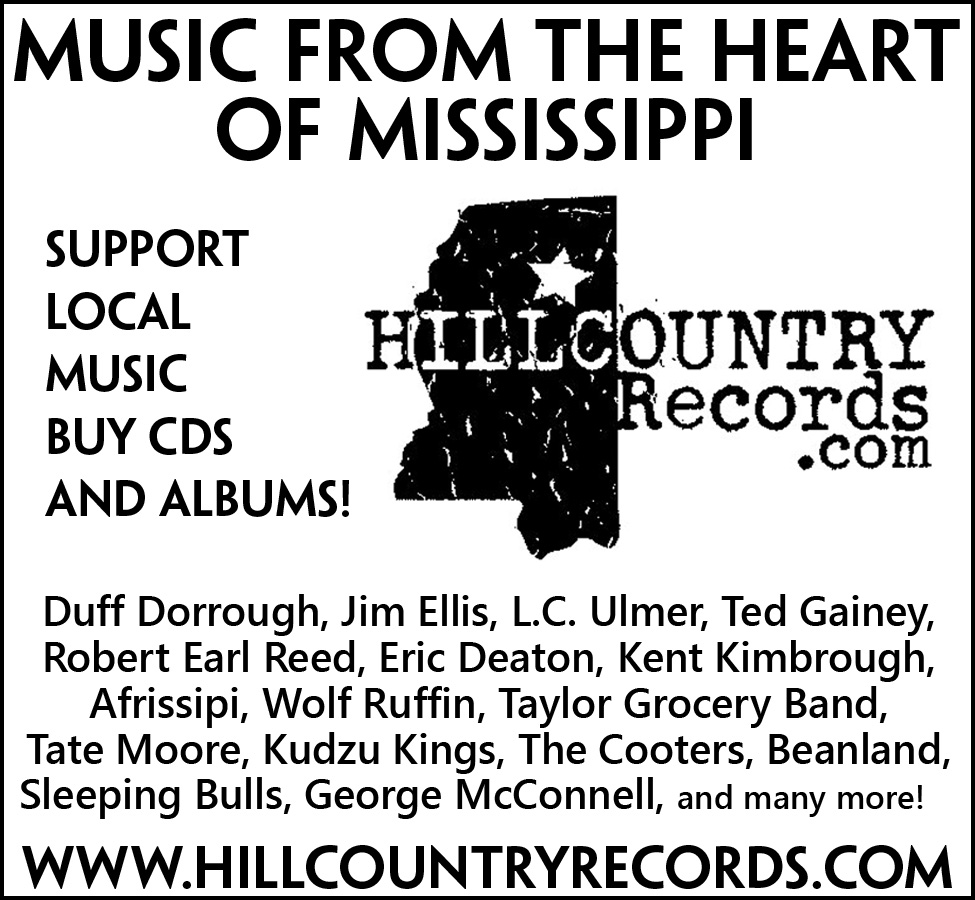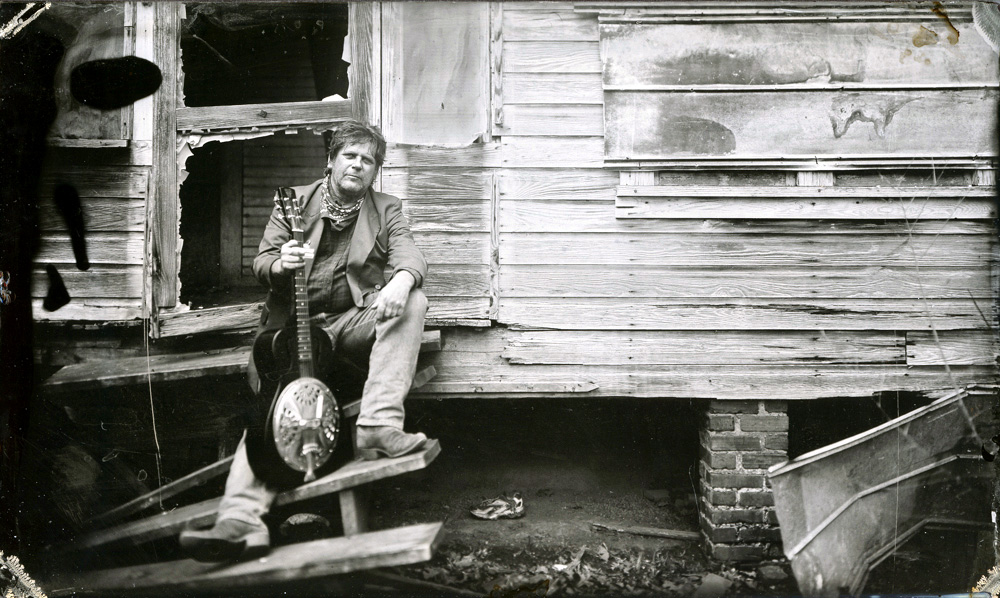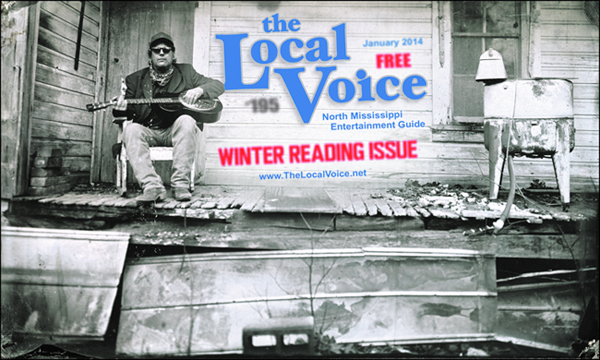
Local record label Hill Country Records releases the debut album from the Delta musician who’s making waves in the Mississippi mud.
Article by Carl Massengale
Ambrotypes by Chad Smith
Music by Jim Ellis
–
[soundcloud url=”https://api.soundcloud.com/tracks/121846758″ params=”color=ff5500″ width=”100%” height=”166″ iframe=”true” /]
–
 Ted Gainey makes records. At home or in studios small and large, the former drummer for Blue Mountain, Kudzu Kings, and the Taylor Grocery Band works with microphones, preamps, compressors —all the cool junk soundmen get to fumble with, plus drums and instruments. But more importantly, Ted works with musicians.
Ted Gainey makes records. At home or in studios small and large, the former drummer for Blue Mountain, Kudzu Kings, and the Taylor Grocery Band works with microphones, preamps, compressors —all the cool junk soundmen get to fumble with, plus drums and instruments. But more importantly, Ted works with musicians.
A former resident of Oxford, Gainey put in years of gigging and touring that stamped his card as a blood member of the music fellowship in the Deep South. Time in Nashville as an assistant to big time engineers gave him up-close exposure to methods and procedures that would serve him well on both sides of the glass when he returned to Mississippi to pursue the esoteric craft. Gainey worked as a session drummer as well as engineer/producer, logging sessions with Cary Hudson, T-Model Ford, and Robert Belfour, among many others.
In 2009, Gainey rode the drum throne for the initial recordings on departed delta guitar guru Duff Dorrough’s second solo album—a fortunate placement which ultimately led to Ted’s hosting further sessions at his family’s farm near Canton, and later engineering the final tracks in Dorrough’s living room outside Ruleville. The resulting album, a rich and poignant epilogue to Duff’s celebrated run as north Mississippi’s beloved earl of coolhood, was released short weeks after the guitarist’s lamented passing.
In the wake of intense involvement coordinating the Dorrough release, Gainey throwed his iTunes on shuffle in the truck, cruised and mused what the next direction might be. From amongst a diverse array of juxtaposed styles arose a soul music Ted recognized as radiating from an authentic delta artist who remained as yet undocumented.
The track was an early arrangement of Jim Ellis’ original song “Friend Behind Your Back,” which featured Oxford favorite Mark Yacovone on organ. Ellis had gained notoriety during the early 2000s as a member of Duff & The Revelators, the Dorrough-led, gospel-oriented combo that had found its voice in recurring appearances on Thacker Mountain Radio. Jim’s gruff yet mellow vocal timbre had lent a thick Delta tone to the group’s lively harmonies, and that same real feel through Gainey’s truck stereo sparked the idea for his next project there and then—somebody ought to make a Jim Ellis record. He would get right on it.
* * * * * * *
In fact, secret documents did exist.
In 1983 Jim Ellis was in high form. Recently married to the knockout redhead whose love would prove to be the sustaining kind, he had moved his bride into a cool spacious apartment, replete with rustic beams and barnboard walls, tucked round a corner of the red brick post office complex in the delta hamlet of Merigold, Mississippi. A gifted artist and musician from youth, Ellis couldn’t have found more perfect surroundings… Merigold was (and still is, to some degree) a place with the magic ambience of a former time.
Small town storefronts preserved the familiar architecture of an earlier century, where the Chinaman’s store looked out over train-polished tracks shaded by a stout and ancient oak, beneath whose boughs the likes of Charlie Patton had sought repose, back when blues were first learning their way around the delta.
Ellis, already a skilled carpenter and tradesman, built a wooden shed adjoining his new quarters—a man ought to have a shed. But once the rake and shovels were propped in their corners, various bricklaying tools and construction equipment all housed within, an unexpected item of surpassing utility presented itself, and summarily hijacked the structure for loftier purpose: a Teac four-track reel-to-reel recorder, many a musician’s gateway to home record making, came up for sale, and Jim’s jaw slacked a little at the sight of it. This was the same rig he had experimented with at age seventeen while visiting a cousin in Michigan, and the results from those early efforts had imbued him with a fever never since subsided. The tape machine was a must-have, and with its procurement an era of Delta bootleg recording commenced.
The multi-tracking capability afforded by the new reel-to-reel recorder catapulted Jim Ellis’ already rich musical talents to a realm of freshly charged creativity. A dry season of his songwriting trajectory concluded, as new material began to emerge and develop with enthused intensity. Soon Jim’s shed in Merigold became a destination for Delta musicians who swang by to lay down parts on some cool tapes taking shape there. Danny Durastanti, onetime second guitarist in Duff Dorrough’s Sausage & Biscuit Boys, provided drums; he would later go on to tour as drummer for Tommy James & The Shondells.
Tangents co-founder Charlie Jacobs, a boyhood friend of Ellis, dropped in to play saxophone, while his bandmate Fish Michie, Jim’s neighbor just across Highway 61, stepped over to contribute organ and keyboard parts.
Original sounds from Jim Ellis’ shed in Merigold made the rounds from hand to hand during the 1980’s as cassette tapes, the poor man’s medium of the time. The experience of producing homegrown music in a makeshift studio propelled the formation of an energetic new band, The Roadrakers, with Jim and renowned Delta plein air artist Gerald Deloach on guitars, Jimmy Fickle playing bass, and noted Rosedale artist and instrument builder David Moore as drummer.
During the group’s colorful run they had occasion to accompany Memphis R&B legend Rufus Thomas, gospel/soul icon Pops Staples, and Creedence Clearwater’s John Fogerty onstage at live events. They also piled their gear into cars and drove for Jackson, Mississippi, where Tangents bassist Steve Vines engineered more recordings of mostly originals penned by Ellis with co-writer Gene Coghlan.
As computers advanced into household use during the 1990s, digital technology transformed the sound recording process from a physical medium to a virtual one. Advanced audio capture became accessible in the form of self-contained multi-track workstations, compact recording modules that achieved much of the work that pro studios could, howbeit on a reduced scale. Musicians embraced the new capabilities this afforded them, and The Roadrakers rode that bandwagon.
Their center of operations moved north toward Alligator, Mississippi, where the secluded country compound of painter Gerald Deloach became fertile ground for a period of intensive creative collaboration that extended through the turn of the millennium. The songsters routinely suspended convention to generate sometimes wildly enigmatic lyrical compositions, always grounded in Ellis’ intuitive musical sensibilities and natural guitar skills. The resulting tracks blended acid rock, electric blues, country tonk, twang, and balladry with jazz, pop, and vaguely-defined experimental forms to comprise a new Delta music, as idiosyncratic as it was roots-laden; soulful, arty, and humorous all at once. The prevailing medium of distribution remained the trusty cassette tape, and the heady music chronicled during those Alligator days made its way out to listeners with similar stealth as before.
Other sporadically arranged recording dates occurred through the years, notably a session in a Greenwood music store which featured The Rakers plus Duff Dorrough and an amped up Forrest Parker (lately of Tate Moore’s Cosmic Door) firing off pedal steel blues solos unmatched in intensity of expression. One Super Bowl Sunday in Nashville rendered cuts sublimely sledge hammered with Fish Michie’s piano jazz power chord accompaniment.
All these various stages and occasions, captured and preserved on tape, accumulated to a fairly remarkable catalogue of recorded original material, representing the musical evolution of the Mississippi Delta’s own very talented Jim Ellis.
Then at some moment not distinct in memory, in a place unknown or lost to recall, the particular box which held the copy masters for tapes of all the songs from all the different periods somehow slipped, unnoticed, from Jim’s truck, and was gone. A dark highway maybe, the middle of the night; the music of his life slipped off into obscurity.
* * * * * * *
 By the time Ted Gainey lit upon the idea for a Jim Ellis album, tides of time had wrought profound changes in Jim’s life.
By the time Ted Gainey lit upon the idea for a Jim Ellis album, tides of time had wrought profound changes in Jim’s life.
Double hip replacements had pretty much eclipsed his proud trade as a bricklayer. A losing bout with a circle saw had abbreviated the guitarist’s fret hand, and with it much of the facility he had attained through years of intimacy with the instrument. The once buoyant Revelators gig was now faded far behind… Jim didn’t even live in the Delta anymore, but eastward in Senatobia. And a memorable tenure maintaining the grounds of the illustrious Jerry Lee Lewis estate had run its course, leaving Jim down and out about what to do next. The call from Gainey came as a timely beacon of much needed encouragement, and Ellis was on board the project with both feet from day one.
Material for the album would be gleaned from among the old delta bootlegs. Most of the music had been recovered through efforts of faithful friends (much of it literally from the archives of an archaeologist) and dutifully preserved in digital format. Titles from the Merigold shed, Roadrakers, Alligator days, and Greenwood sessions were all represented in the eventual program for the album. Even “Bituminous Coal,” the four-track experiment teenaged Jim had brought back from Michigan to impress his southern friends, was to be recut for the new work.
To bring the recording process as close to Jim as possible, Ted arranged weekends at Winn McElroy’s Black Wings Studio in Water Valley. Jamming all the music they could into these work shifts, the men laid basic tracks marathon style, recording all night sessions with a few hours crash time after sunup, then hard at it again. Ted got on the phone to his colleague from Blue Mountain days Laurie Stirratt, who contributed nearly half an album’s worth of finished bass parts from scratch in an afternoon. Guitarist George McConnell, of Beanland, Widespread Panic, and his own Nonchalants, plugged in to liven the tracks with electric fills and solos.
 Gainey recruited pro music veteran Chalmers Davis to handle keyboard duties for the album. A former Muscle Shoals and Nashville session player, Davis held credits on records by George Jones, Tammy Wynette, Gregg Allman, and Emmylou Harris, among many others, and was organist in Little Richard’s band for over two decades. Davis’ Windy Ridge Studio near Terry, Mississippi became the stage for overdubs by Cary Hudson, banjo hand Tim Avalon, and saucy Delta girl Baby Jan Smith, an Ellis friend from the old days.
Gainey recruited pro music veteran Chalmers Davis to handle keyboard duties for the album. A former Muscle Shoals and Nashville session player, Davis held credits on records by George Jones, Tammy Wynette, Gregg Allman, and Emmylou Harris, among many others, and was organist in Little Richard’s band for over two decades. Davis’ Windy Ridge Studio near Terry, Mississippi became the stage for overdubs by Cary Hudson, banjo hand Tim Avalon, and saucy Delta girl Baby Jan Smith, an Ellis friend from the old days.
Kudzu King Max Williams provided haunting lap steel sounds recorded on his own home rig, then mailed in for Gainey to fold into the mixes. Carl Massengale, honorary Revelator and onetime drummer for Cleveland band The Esquires (with Charlie Jacobs and Jim Ellis), delivered harmony vocals. And a pair of Ellis’ daughters, Molly and Kate, brought their youthful vibe to the blend, shining notably as girlie voices on the album’s upbeat closing song “Lemon Peel.”
 With tracking for the new project accomplished, Ted Gainey signed on as a partner at longtime associate Justin Showah’s Hill Country Records label, planning a joint CD/vinyl LP release for late 2013. The pair had toured extensively together in the early 2000s, backing Cary Hudson at clubs and festival dates in Germany, Holland, and Austria. As members of the Taylor Grocery Band they had gigged around the deep south, cut a record, and served as house musicians for several seasons of Oxford’s Thacker Mountain Radio. Label founder Showah, also an alumnus of The South Memphis String Band and Jimbo Mathus’ Tri-State Coalition, played electric and upright bass on many of the Ellis album cuts.
With tracking for the new project accomplished, Ted Gainey signed on as a partner at longtime associate Justin Showah’s Hill Country Records label, planning a joint CD/vinyl LP release for late 2013. The pair had toured extensively together in the early 2000s, backing Cary Hudson at clubs and festival dates in Germany, Holland, and Austria. As members of the Taylor Grocery Band they had gigged around the deep south, cut a record, and served as house musicians for several seasons of Oxford’s Thacker Mountain Radio. Label founder Showah, also an alumnus of The South Memphis String Band and Jimbo Mathus’ Tri-State Coalition, played electric and upright bass on many of the Ellis album cuts.
“Friend Behind Your Back,” the strong melodic number that first inspired Gainey to document Jim Ellis’ music on record, became the title track for the resulting album. It coincidentally was the final song ever recorded by Duff Dorrough, though the track didn’t make it onto his posthumous release. As fortune occurred, Dorrough had played in the same key as the Ellis version, and at the suggestion of Duff’s companion Nanette Long, guitar phrases were isolated from his rendering and grafted into the new album take. Sweet bluesy tones added grace to the song’s musical passages, as the Ellis girls and Jan Smith’s feminine chorus confirmed its benevolent gist: “I’m still your friend….”
Through the changes, through time’s attendant losses and rewards, Jim Ellis still has the gift to share. His new album opens the vault to let the secret out.
–
Friend Behind Your Back is now available to order from HillCountryRecords.com.
Ask for it at The End Of All Music record store in Oxford, or visit Jim Ellis on Facebook.
–
Carl Massengale is a composer of sacred songs who specializes in vocal harmony. He resides in rural Walthall County, Mississippi. Email: lexicosmATgmail.com (replace AT with ampersand when sending mail)
–
This article was originally printed in The Local Voice #195 (published January 9, 2014).
To download a PDF of this issue, click HERE.
[soundcloud url=”https://api.soundcloud.com/tracks/121847263″ params=”color=ff5500″ width=”100%” height=”166″ iframe=”true” /]





Loved the article on the “Secret History of Jim Ellis.” Is there any way you can get me an address for Jim Ellis? We were close friends back in school in Drew MS before i moved to England. Performed his wedding but haven’t seen him since and can’t find him o any of his family on Facebook.
Any help would be appreciated
Stan Frank
sbfrank56@hotmail.com